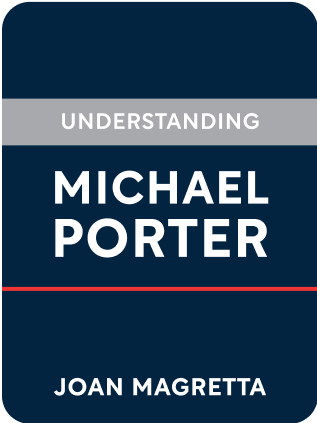

This article is an excerpt from the Shortform summary of "Understanding Michael Porter" by Joan Magretta. Shortform has the world's best summaries of books you should be reading.
Like this article? Sign up for a free trial here .
Zara is one of the most successful clothing companies of all time. What exactly does it do to succeed?
Learn more in Michael Porter’s case study of Zara. We’ll discuss how Zara’s unique choice of activities gives it such a large advantage in getting fast fashion to its stores in record time.
The Zara Case Study and the Activity System Map
The Zara case study shows how Zara’s different activities fit. To visualize the strength of fit between activities, place the activities on a map.
- Start by placing the key components of the value proposition.
- Make a list of the activities most responsible for competitive advantage
- Add each activity to the map. Draw lines wherever there is fit: when the activity contributes to value proposition, or when two activities affect each other
Here’s an example for IKEA:
A densely interconnected activity map is a good sign. A sparsely connected map shows weak strategy.
The activity map isn’t useful just for description of your current strategy. It can also be used for ideation for new strategies. Can you see how Porter’s Zara case study applies to these strategies?
- Can you improve fit between activities?
- Can you find ways for an activity to substitute for another?
- Can you find new activities or enhancements to what you already do?
- Are there new products or features you can offer because of your activity map, that rivals will find difficult to emulate?
Case Study: Zara
Porter’s Zara cast study examines the strategy of Zara. Fast fashion brand Zara is another strategy powerhouse. It aims to get styles from runway to store within weeks, price affordably, and refresh its stores’ inventory every 2 weeks. The Zara case analysis shows that to achieve this, it shows tailored activities and strong fit:
- A larger design team (double that of H&M’s) quickly translates innovative fashion seen in high fashion and clubs into affordable designs. This reduces time from inspiration to production.
- It does its own manufacturing in Europe, instead of outsourcing to Asia. This reduces shipping time and allows for tighter control of quality.
- It owns its own delivery trucks, optimized for frequent shipments to stores.
- Garments are delivered ticketed and hung on racks (instead of folded and boxed), costing more to deliver but reducing time to hitting the store floor.
- It rents large stores in high-traffic places, attracting natural foot traffic. This also reduces normal advertising costs.
- It adds new styles to stores in limited quantities every 2 weeks, encouraging a high rate of return and compulsive shopping to buy before they’re gone.
Once again, observe how a rival clothing brand would find it very difficult to compete in fast fashion without adopting the whole set of activities. It might try to design clothes quickly, but without all the reinforcing activities in manufacturing and logistics, its new inventory would arrive in stores ready to sell far later than Zara. The Zara case analysis proves why outsourcing works for them.
Implications for Outsourcing
The philosophy of core competences has led companies to focus on one key activity and outsourcing many others, without thinking through the strategic consequences.
Instead, the activities that have fit and are tailored to the company’s position should not be outsourced. The fewer elements that are in the company’s value chain, the fewer opportunities there are to establish tailoring, trade-offs, and fit, meaning the less defensible the competitive advantage.
(Shortform note: this contributes to how manufacturing becomes a commodity – there are few value added activities beyond pure production, which then becomes a competition on price.
Continuity of Strategy
The last component of strategy is continuity. Companies need breathing room to hone their activities and develop competitive advantage over time. Strategy isn’t a stir fry, it’s a stew – it takes time for the flavors and textures to develop.
- The richly developed strategies of IKEA or Southwest took years, decades to hone.
- Strategies often begin with 2 or 3 essential choices, then adding additional activities to extend the fit.
Continuity strengthens a company’s position in three ways:
- Branding and customer relationships: customers will know what the company stands for, and what needs they can and can’t meet.
- Partners: suppliers, channels, and complements learn to contribute to a company’s advantage.
- Dell had suppliers co-locate warehouses nearby
- (Shortform example: Amazon works with manufacturers to repackage goods in shipping-friendly forms)
- Team and internal culture: hiring for cultural fit and training employees improves. People make better decisions that fit company strategy
It takes years to implement a strategy. Switching strategies too often is value destroying, causing whiplash in the org and dismantling of value chains.
Maintaining Strategy
Continuity doesn’t mean an organization should stand still. As long as there is stability in the core value proposition, there should be innovation in how it’s delivered. The consistency of delivery and supply shown in the Zara case study proves how important this is.
First, companies must stay on the frontier of operational effectiveness. You must assimilate best practices that do not conflict with your strategy or cause negative trade-offs. Think about how Zara might accomplish a faster supply chain than competitors in the Zara case analysis.
- BMW embraced OE improvements to decrease design time, but stopped short of steps that would remove its unique design language.
Second, you must change whenever there are ways to extend your value proposition or better ways to deliver it.
- Reuter started with spreading market information through pigeons, then moving onto telegraph and the Internet.
- Netflix began with direct to customer movie DVDs, then switched to Internet streaming as soon as it became feasible.
The Zara case study can help you understand the implications of outsourcing, and weigh costs and benefits to your plan. If outsourcing or manufacturing questions are a part of your business strategy, Porter’s Zara case study is a great example.

———End of Preview———
Like what you just read? Read the rest of the world's best summary of Joan Magretta's "Understanding Michael Porter" at Shortform .
Here's what you'll find in our full Understanding Michael Porter summary :
- How Porter's famous Five Forces help you analyze every industry
- How IKEA, Southwest Airlines, and Zara have ironclad, defensible strategies
- Why the best companies reject opportunities to focus on what they know






